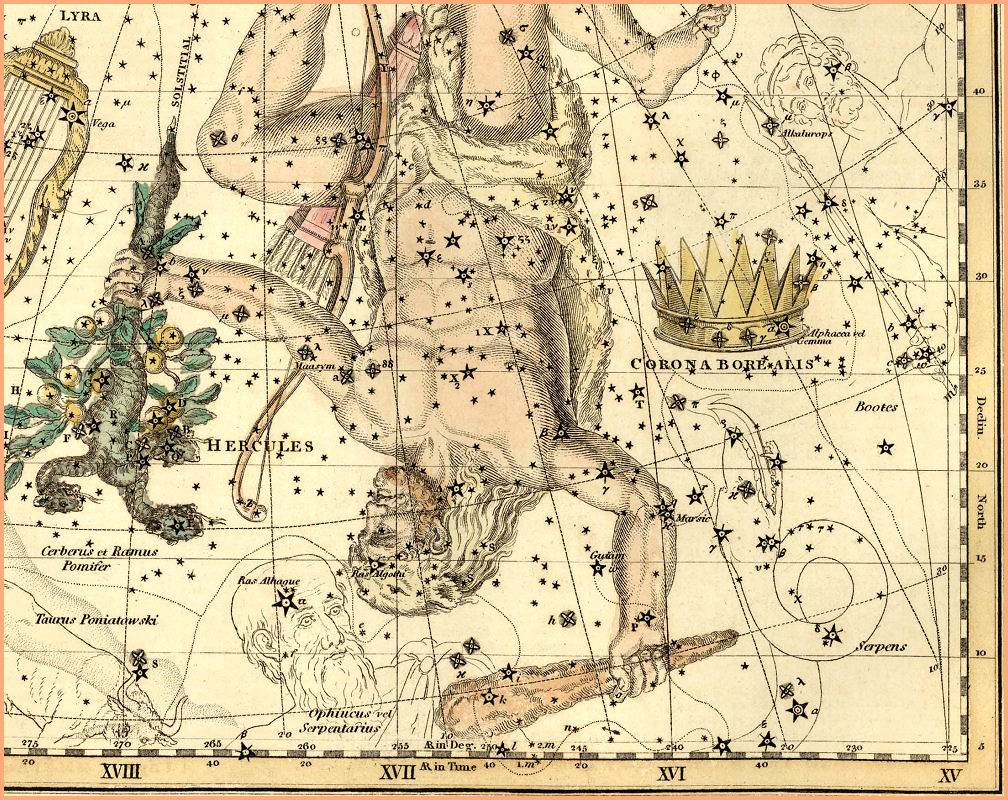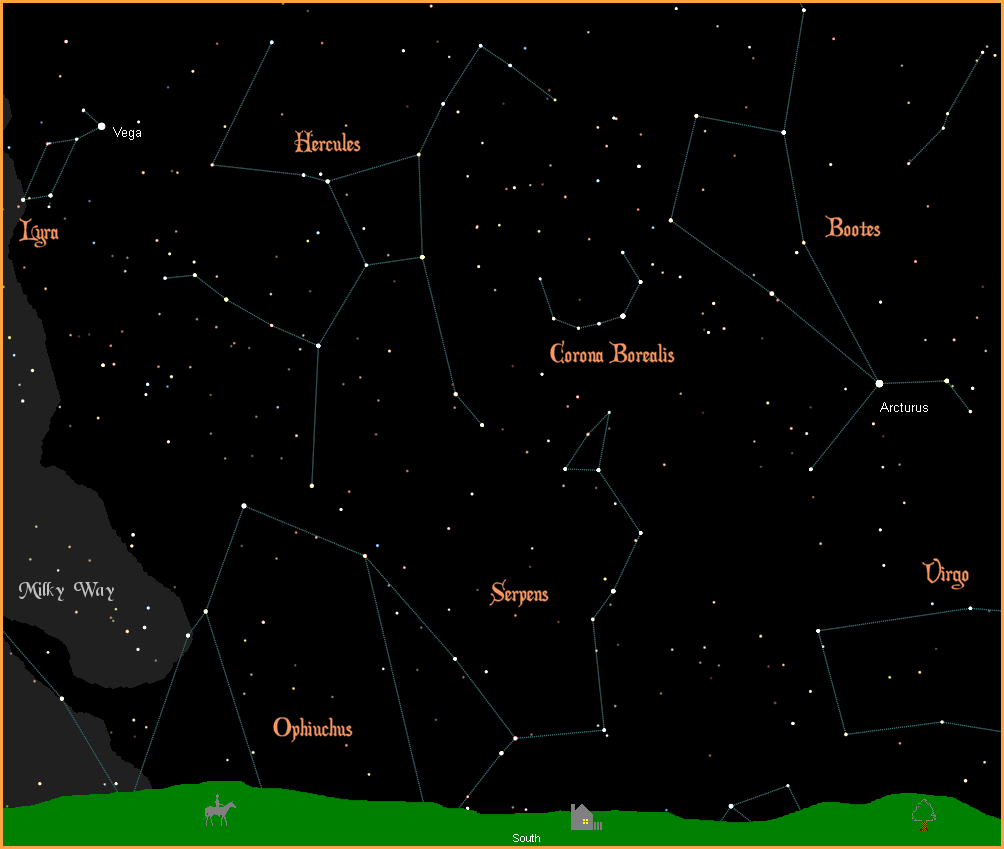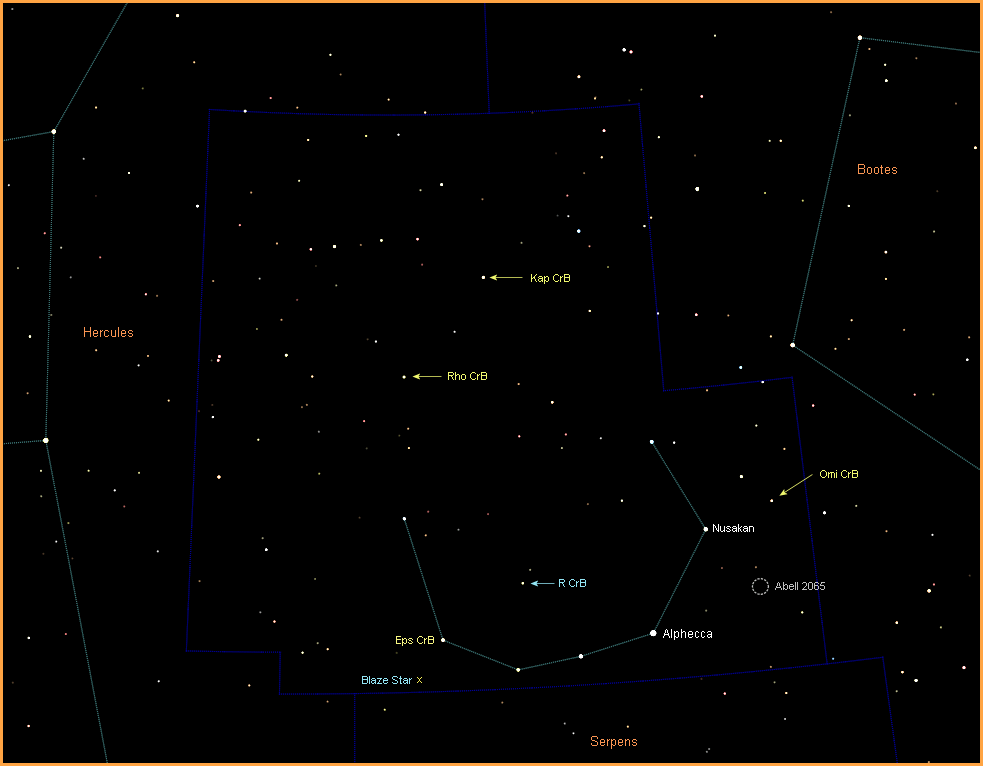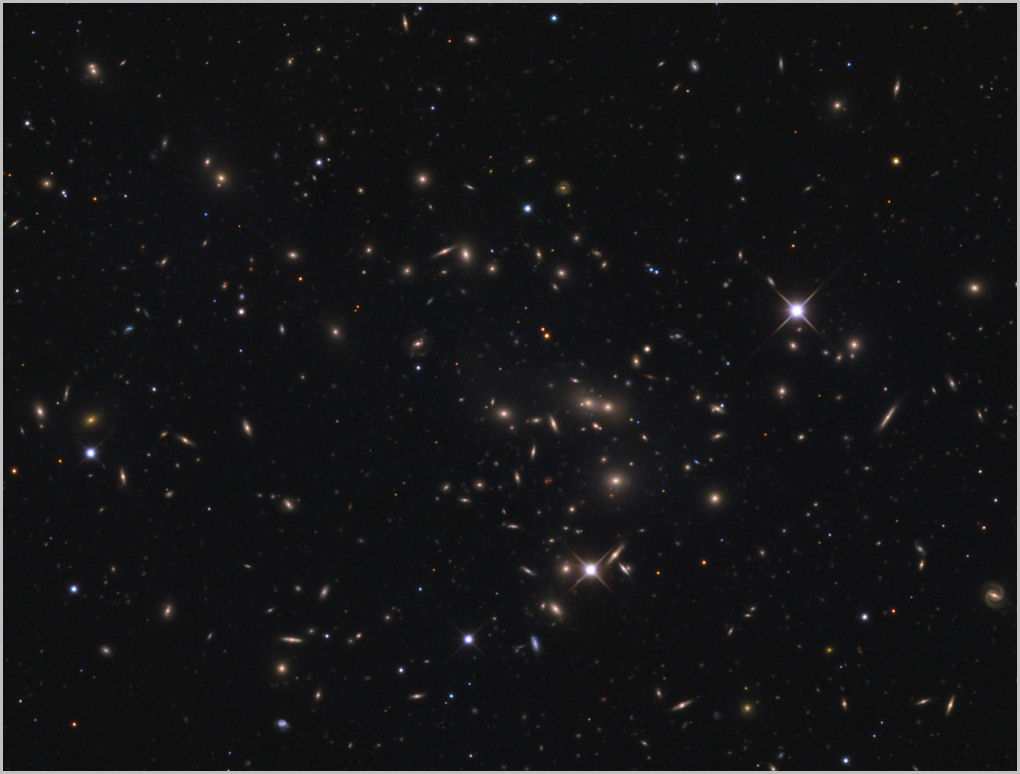| HOME |
|---|
CORONA BOREALIS
The Northern Crown

Corona Borealis - Celestial Atlas by Alexander Jamieson - 1822
| HOME |
|---|

Legend tells us that the northern crown was originally a beautiful jeweled tiera which belonged to the princess Ariadne, of Crete. Her father, King Minos, kept a ferocious minotaur (half man, half bull) trapped in a labyrinth from which it could not escape. The minotaur had a taste for human flesh, and periodically hapless victims from the subjugated city state of Athens were put into the maze for the minotaur to feed on.
One year the prince of Athens, Theseus, was to be fed to the beast. When the princess Ariadne saw Theseus, she immediately fell in love with him and promised to help him escape, if he would take her away and marry her. Theseus agreed, and Ariadne secretly gave him a spool of thread just before he was put into the maze. Theseus unraveled the thread behind him as he hunted down the minotaur and killed it. Then he followed the thread back out of the maze, and carried Ariadne off across the sea back to Athens.
On their journey they stopped at the island of Dia (Naxos), which was the home of the god Dionysus (Bacchus). For reasons known only to himself, Theseus abandoned Ariadne on the shores of the island, where she proceeded to weep and lament, and waste away in her sorrow. When Dionysus found her, he took her as his wife, and they lived a long and happy life together. Eventually, however, she died, as all mortals do, and to honour her memory, Dionysus removed her crown, and flung it into the sky, where the jewels became stars, to stand as an eternal monument to her love and loyalty.
As far back as the third century B.C., Apollonius Rhodius wrote in his Argonauticae:

Alpha Coronae Borealis is the brightest star in the constellation, and named Alphecca, Arabic for the broken (ring of stars). It is also known as Gemma, Latin for jewel, as it is indeed, the jewel in the crown. With a magnitude of 2.23, it is big and bright and beautiful, immediately catching your eye and drawing attention to the crown it is set in. Alphecca is an eclipsing binary system, in which the primary star is a A1V white main sequence star. It is in close orbit with an eighth magnitude companion, and they eclipse each other every 17.32 days, creating slight dips in magnitude. The system is 75 light years away.
The second brightest star is Nusakan, which is Arabic for two lines (of stars), which has nothing to do with the crown, but refers to a much larger asterism, known to the ancient Arabs as "The Pasture". It is an A8V white main sequence star, with a magnitude of 3.66, about 100 light years away. Like Alphecca, it is a binary system, but non-eclipsing, and little is known about the companion.
The star labelled T Coronae Borealis (T CrB, HD 143454) is also called the Blaze Star. It is a M3III red giant variable star that periodically and quite dramatically increases in brightness. Normally it is a magnitude 10 star, too dim to be seen by the naked eye, but on May 12, 1866, it suddenly "blazed" up to magnitude 2, brighter than Alphecca. After only a week it had dimmed back down again. Then, 80 years later, on February 9, 1946, it temporarily blazed up again. So the big question now is whether or not this is a pattern, and will the normally invisible star blaze back up into prominence when another 80 years is up in 2026. The distances to variable stars is difficult to determine, but T Coronae Borealis appears to be very far away, probably over 2,600 light years.
R Coronae Borealis (R CrB, HD 141527) is an even more mysterious variable. Instead of brightening, it dims, but it does so without any apparent pattern. Its normal magnitude is around 6, right at the edge of naked eye visibility, but at widely irregular intervals it will suddenly dim to magnitude 12, and stay there for a few days, a month, or even a year or two. It has been observed closely by astronomers for 150 years, since 1858, and so far, the variations in its brightness have been completely irregular. There are no patterns, and there are no explanations. R Coronae Borealis is a G01 supergiant estimated to reside at the very great distance of 5,000 light years.

The star Epsilon Coronae Borealis (Eps CrB, HD 143107) may not have a name, but it does have a planet. The star is a K2III orange giant, with a magnitude of 4.13, about 230 light years away. The planet is a gas giant about seven times the size of Jupiter.
Kappa Coronae Borealis (Kap CrB, HD 142091) is another naked eye star with a planet, although a little harder to spot at magnitude 4.79. It is a K0III orange subgiant, about 100 light years away, with a gas giant planet 1.6 times larger than Jupiter.
The star Rho Coronae Borealis (Rho CrB, HD 143761) is the third naked eye star in this constellation with a planet, although at magnitude 5.4 you need a good dark night to see it. It's worth finding though, because it is a G0V yellow main sequence star, almost identical to our Sun, and it is only 57 light years away, making it a good close candidate for hosting some form of life. The planet found is almost exactly the same size as Jupiter.
Most constellations are lucky if they have one naked eye star with planets, but Corona Borealis has four! The fourth is Omicron Coronae Borealis (Omi CrB, HD 136512), a K0III orange giant, with a magnitude of 5.1. It is about 274 light years away with a planet 1.5 times the size of Jupiter.
There are two other stars with gas giant planets, but they are both very far away and beyond naked eye visibility. For more information on these and other extrasolar planets, visit NASA's New Worlds Atlas, and The Open Exoplanets Catalogue.
There is one more object of note in Corona Borealis. It is a particularly dense cluster of galaxies, sometimes referred to as a "supercluster". There are over 400 galaxies clustered together in an area the width of the moon, and they are very far away - over a billion light years. An average magnitude of 16.5 places them out of reach of most amateur scopes.

|
|
|
|
|
|